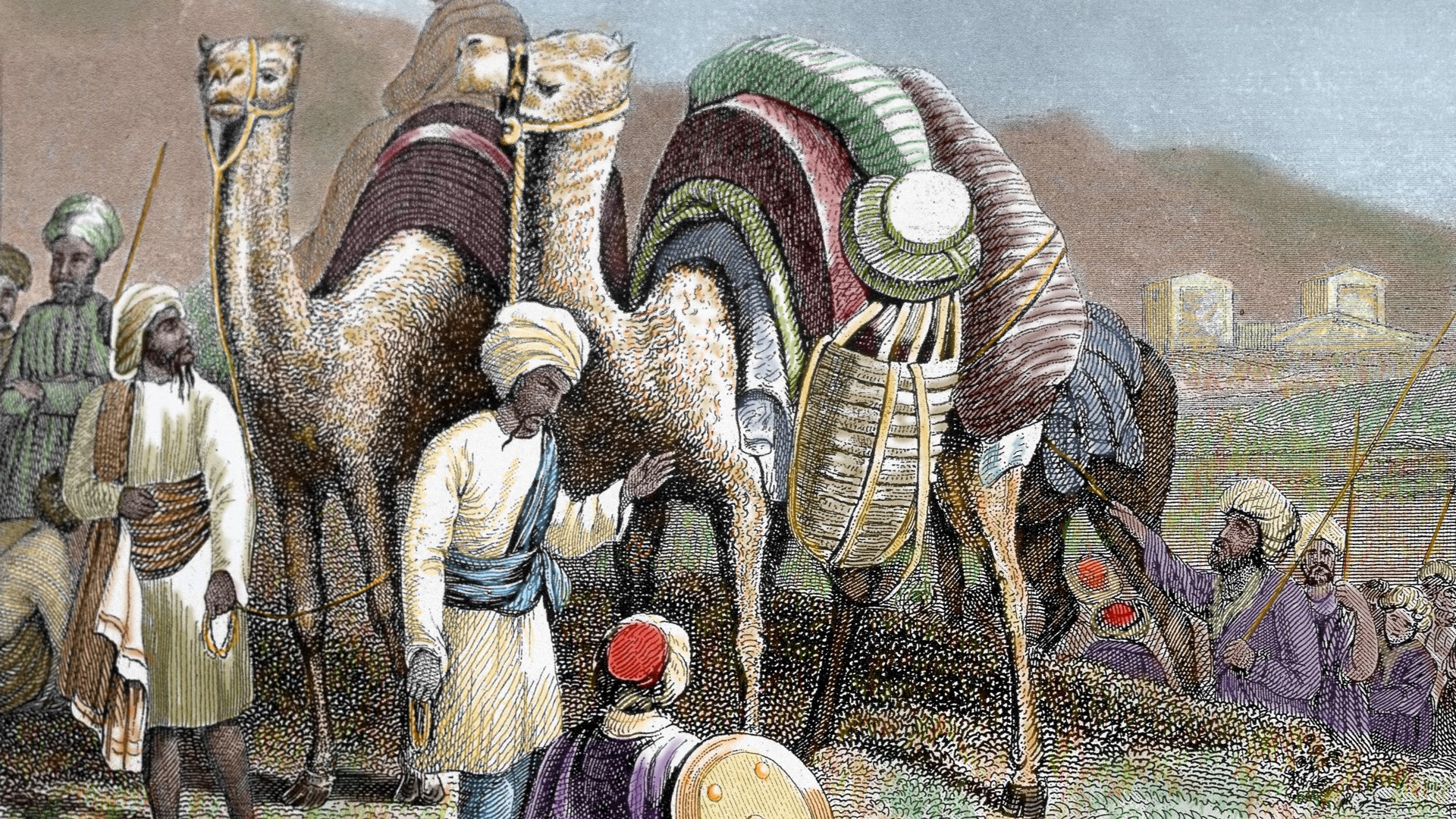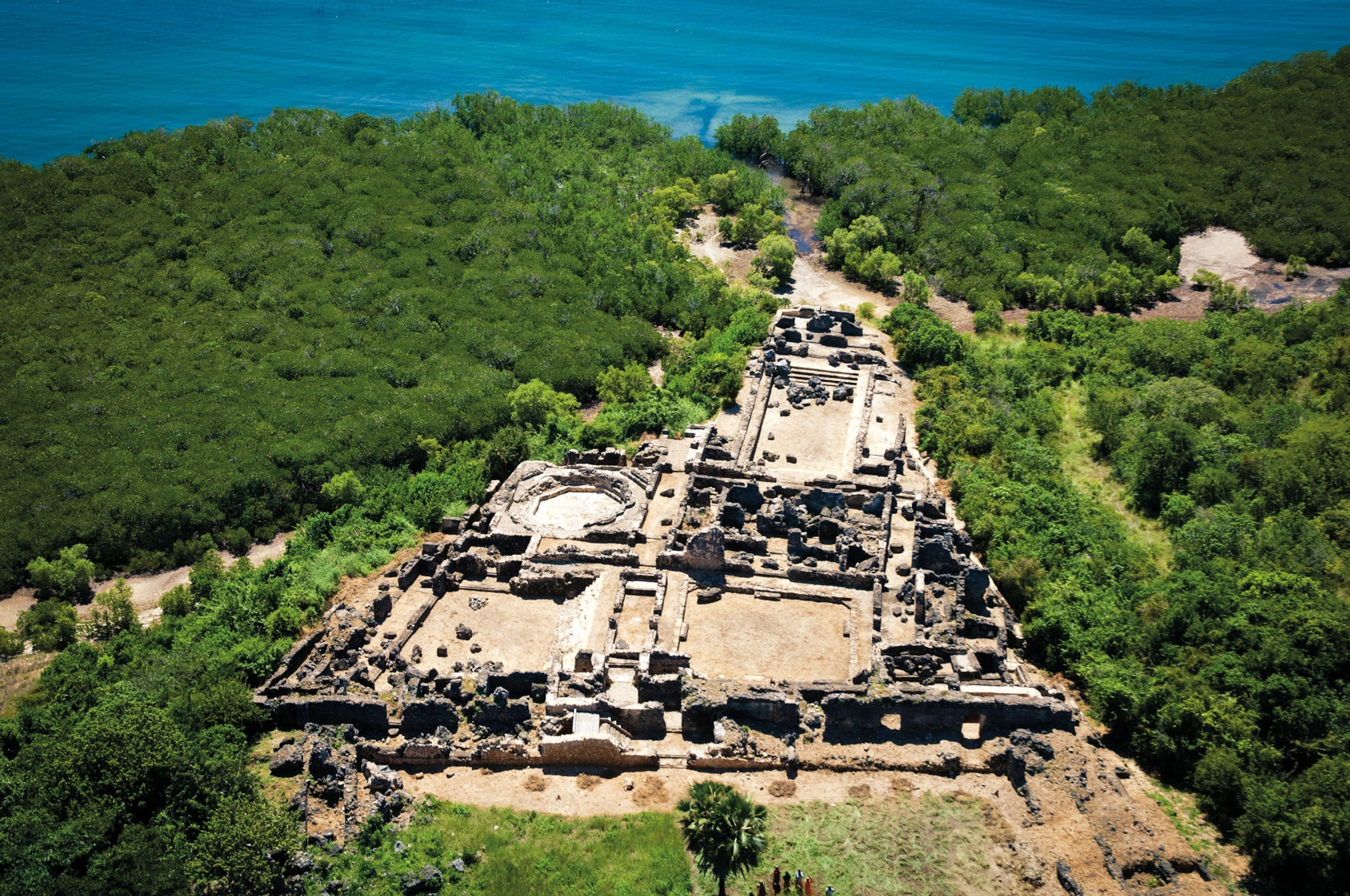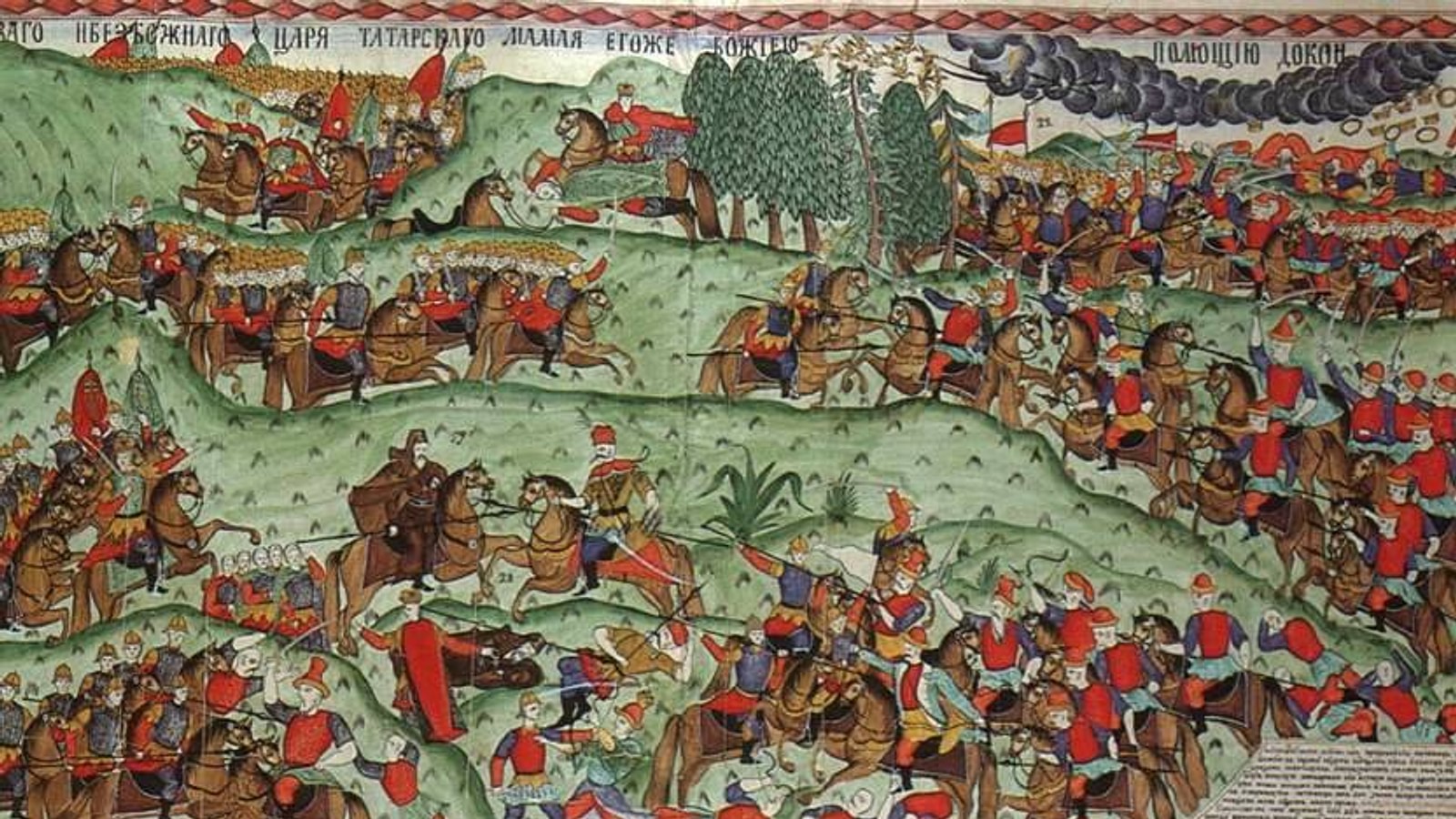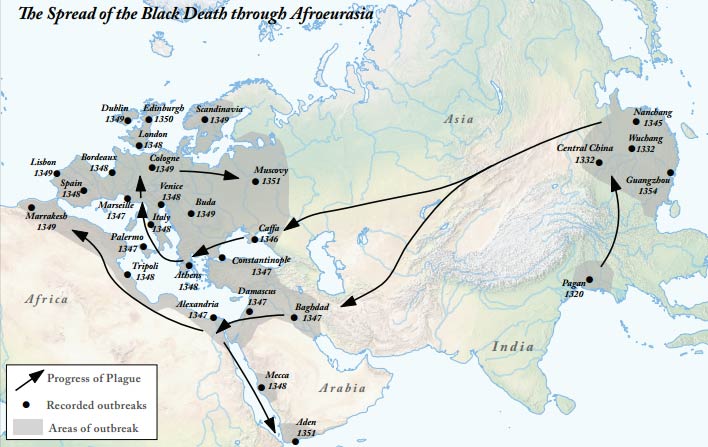This Central Asian stopover provided lodging, food, and security for Silk Road merchants.

What is a caravanserai?
Seasonal winds that shaped sailing patterns in the Indian Ocean.

What are the monsoon winds?
This hybrid language developed on the East African Coast, blending Bantu and Arabic.
What is Swahili?
This fruit crop spread through the Mediterranean thanks to trade and Muslim agricultural expansion.
What are citrus fruits?
The Mongols conquered this Chinese dynasty in 1279 and established the Yuan.
What is the Song Dynasty?
This West African empire grew rich taxing gold and salt trade across the Trans-Saharan Trade Route.
What is Mali?
This (now abandoned) Swahili Coast city-state became wealthy from gold and ivory trade.

What is Kilwa?
This Chinese philosophy reemerged in the Song Dynasty, blending Confucianism with Buddhist thought.
What is Neo-Confucianism?
Spread along trade routes, especially coming to the West from the East via the Silk Roads, this epidemic devastated Europe in the 14th century.
What is the bubonic plague / Black Death?
This term describes the period of stability and security across Eurasia under Mongol rule.
:max_bytes(150000):strip_icc():format(webp)/Mongol_dominions1-5b2e3058ff1b780037c7a754.jpg)
What is the Pax Mongolica?
This famous North African traveler documented Islamic societies across Africa and Asia in the 14th century.

Who is Ibn Battuta?
This Southeast Asian kingdom grew rich by controlling the Strait of Malacca and taxing passing ships.

What is Srivijaya?
This English mystic’s book described her pilgrimages and visions, giving insight into medieval Christian spirituality. (This was in the textbook)

Who is the Catholic Mystic - Margery Kempe?
These agricultural innovations supported Incan and Andean societies, though outside Afro-Eurasia.

What are terrace farming and irrigation systems?
The Golden Horde ruled this part of the Mongol Empire.

What is Russia/Eastern Europe?
These paper-based financial tools made long-distance Silk Road trade safer and more efficient.
What are bills of exchange / banking houses / letters of credit?
These Arab vessels with triangular sails dominated Indian Ocean shipping.

What are dhows with lateen sails?
These communities formed when merchants stayed abroad, blending local and foreign traditions, especially on the Indian Ocean Trade Routes.

What are diasporic communities?
"Rice ripens early and allows two harvests each year, greatly benefiting the people.” (Song Chinese agricultural report on Champa rice)
The spread of Champa rice in China and bananas in Africa both caused what demographic effect?
What is population growth?
Yuan Dynasty record:
“The Great Khan appoints men of every race and creed… but the empire is ruled with one law.”
What does the quote above reveal about Mongol strategy for governing their diverse empire?
The use of religious tolerance and inclusion of local officials supported governing over a vast and diverse region.
“They have a greater abhorrence of injustice than any other people. Their sultan shows no mercy to anyone guilty of it.”
Ibn Battuta’s praise of Mali’s justice system exemplifies what about the link between politics and trade?
What is state/government power protects commerce?
“Malacca is a city that has grown into greatness… Whoever is lord of Malacca has his hand on the throat of Venice.” (Portuguese chronicler, 15th c.)
Based on the quote, Srivijaya and Malacca’s control of the Strait of Malacca illustrates what strategy states used to profit from trade?
What is taxing maritime chokepoints?
A Chinese official describing Buddhism and Confucianism once said:
“Though foreign in origin, it has merged into our ways, and scholars now weave its ideas into our teachings.”
This blending is an example of what historical process?
What is cultural syncretism?
The Black Death illustrates what continuity and what change in Afro-Eurasian connections during the 13th/14th centuries?

Continuity: trade continued to spread goods/resources
Change: Trade weakened feudalism through labor shortages and undermined Church authority in Europe due to the plague.
Persian historian Juvayni on Genghis Khan:
“He was scourge and mercy both — scourge to the nations, mercy to the merchants.”
This quote reflects what continuity and what change in nomadic empires under Mongol rule?
Continuity: nomadic conquest, military sieges
Change: protection of merchants along the Silk Road/within Mongol Empire, unprecedented global trade integration